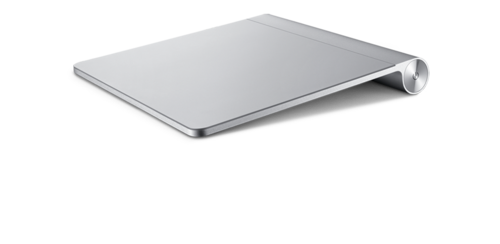You may have heard already but, along with some new iMacs (Win), Mac Pros (Big Win), 27inch Cinema Display (Lickable), Apple released a brand new product – The Magic Trackpad.
Now, there are those who are trackpad people, those who can’t stand them, and a few in-betweeners who are comfortable with either. I’m one of the later. I even have a use case for one – My media center is an iMac and, due to its station on a shelf, there is just not enough travel room for a mouse. I currently have a Kensington Orbit Trackball attached to it and, while it does the job, it sure is not as sexy or, well, magic. But these details are not the story from my perspective.
Let’s do some theorizing on that magic for a bit. You may see a revolutionary mouse and trackpad. I see something far larger and more subversive…
Apple is rewiring our brains for touch.
Just like with the iPhone and iPad, Apple is steadfastly reinforcing the idea that touch is the way we interact with our computers. The Magic Mouse and Magic Trackpad are just one more step in that direction. In fact, I would not be surprised if, before we ever see a touch based iMac, we see a keyboard without keys. A completely touch aware input experience in order to prepare the masses for the “next big thing”. That big thing is input devices as we have come to know them going away for good.
So, this begs the question, “Why not just make a giant desk sized iPad type iMac now?” Here is the answer: It is a minor adjustment to behavior and learning to make such moves with a brand new device, because the general public will see it as “new device, new input”. It is much more difficult to take something that has followed only one input method (keyboard and mouse) for twenty years and suddenly thrust something this new upon them. Revolutions generally start with a few new ideas that pick up steam and grow larger as they roll down the hill. The Magic Trackpad is the visual representation of the revolution to come.
